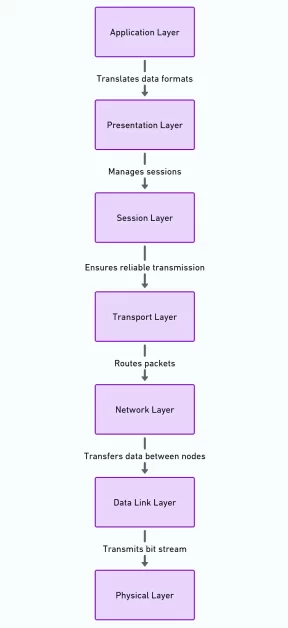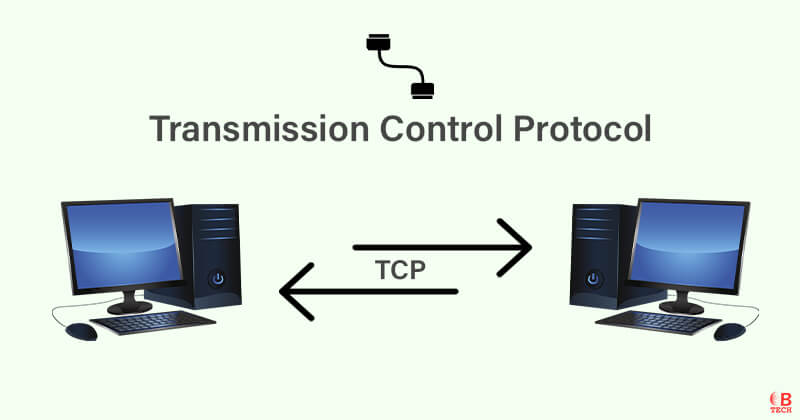The transport layer is commonly referred to as Layer 4 within the Open Systems Interconnection (OSI) network model. This model simplifies the process of transferring data between networked computers by dividing the responsibilities into seven distinct layers.
Functions of the Transport Layer
At the transport layer, several critical functions are performed to ensure data moves efficiently across the network. These include:
- Error Correction: It identifies and fixes errors that occur during data transmission.
- Data Segmentation & Reassembly: This involves breaking down large data files into smaller segments for transmission and reassembling them at the destination.
- Flow Control: The layer manages the data transmission rate to prevent overwhelming the receiving end.
- Sequencing: It ensures that data segments are received in the correct order.
Protocols Used in the Transport Layer
To accomplish its tasks, the transport layer employs two main protocols:
- Transmission Control Protocol (TCP): TCP is used for reliable communication, ensuring that all data segments reach their destination correctly and in order.
- User Datagram Protocol (UDP): Unlike TCP, UDP provides a faster transmission service by sending data without waiting for confirmation of delivery, suitable for applications where speed is crucial and errors can be tolerated.
These functionalities and protocols make the transport layer essential for smooth and efficient data communication across different networked systems.
To learn more about internet protocols, follow this link: https://techbonafide.com/internet-protocol-ip/
Techbonafide Explains Transport Layer
The transport layer acts as a mediator to facilitate communication between applications operating on different hosts within a network. It is a crucial component of a network’s layered protocol architecture, ensuring efficient data handling and transmission.
Core Functions of the Transport Layer
This layer handles multiple key operations, such as:
- Segmenting & Transmitting Messages: It takes complete messages from applications, breaks them into smaller segments and sends them to Layer 3 (the network layer). At the destination, these segments are reassembled into the original messages and passed to Layer 7 (the application layer).
- Error-Free Communication: The transport layer ensures that the data sent and received across the network is free from errors.
- Multiplexing: It manages the simultaneous transmission of data streams from various applications over the network.
Key Services Provided by the Transport Layer
 Handshake Protocols: Endpoints use protocols like TCP to establish a reliable connection before exchanging data. This method requires each message to be acknowledged, which can increase network load and reduce speed.
Handshake Protocols: Endpoints use protocols like TCP to establish a reliable connection before exchanging data. This method requires each message to be acknowledged, which can increase network load and reduce speed.- Sequence Maintenance: The transport layer assigns numbers to packets to ensure they are delivered in the exact order sent, even if the network layer fails to maintain the sequence due to dropped packets or interruptions.
- Checksums: This feature ensures the data sent is identical to the data received, thus maintaining integrity across all layers. If discrepancies are found, data can be retransmitted upon request.
- Managing Data Rates: To prevent buffer overruns or underruns, flow control mechanisms adjust the rate of data transmission based on the receiving device’s ability to process the incoming data.
- Congestion Management: The transport layer monitors and addresses data congestion in the network by recognizing overloaded nodes and adjusting data flow rates accordingly.
- Stream Management: The transport layer handles the simultaneous transmission of multiple data streams from different applications, ensuring that network resources are efficiently utilized.
- Data Stream Preferences: Some applications require data in byte streams rather than packets. The transport layer accommodates this preference, allowing for the transmission of byte-oriented data streams.
These functionalities highlight the transport layer’s role in ensuring that communication between different networked computers is reliable, efficient and error-free.
Here is a Chart by Techbonafide that describes the different layers within the OSI (Open Systems Interconnection) model, focusing specifically on the Transport Layer, which is Layer 4 in this model:
| Layer Number | Layer Name | Description |
| 7 | Application Layer | Provides network services directly to applications. |
| 6 | Presentation Layer | Translates data formats between the application and network. |
| 5 | Session Layer | Manages sessions between applications. |
| 4 | Transport Layer | Ensures reliable data transmission between host systems. |
| 3 | Network Layer | Manages device addressing and routes packets between devices. |
| 2 | Data Link Layer | Transfers data between adjacent network nodes. |
| 1 | Physical Layer | Transmits raw bit stream over the physical medium. |
The Transport Layer (Layer 4) specifically focuses on reliable transmission of data segments between points on a network, including error correction, flow control and the management of data transmission sessions.



